Music strikes back: the production of Sergei Prokofiev's anti-war opera becomes an appeal for peace. It is based on Tolstoy's world-famous novel “War and Peace”, whose message was: reflect!

“War and Peace” on the opera stage
“War again. Suffering again, necessary for no one, for absolutely no reason. Fraud again, again the dumbing down and brutalization of people.”
These words come from Leo Tolstoy. The patriarch of Russian literature wrote it down in 1904 – in his article “Remember!”, which referred to the Russo-Japanese war that had broken out at the time. Tolstoy, once a war officer himself, had become an ardent pacifist.
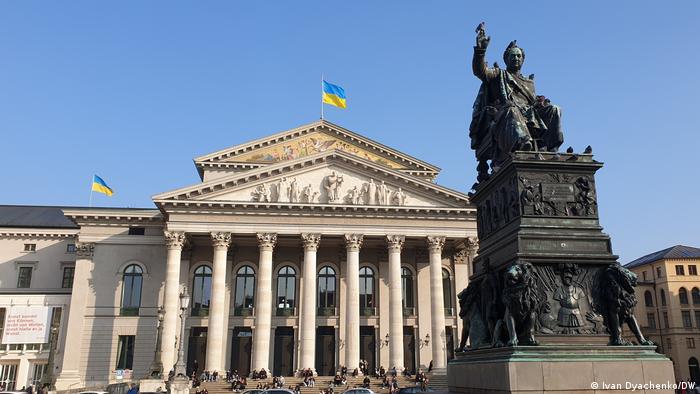
Solidarity with the Ukraine: the Bavarians State Opera flies the flag
An (anti)war opera in times of “special operations”
Exactly this quote was chosen by the creators of the project “War and Peace”, an opera by Sergei Prokofiev based on the novel of the same name by Leo Tolstoy, at the Bavarian State Opera as a guide for their five-hour performance.
It is a production that deserves the attribute “mega”, not only because it requires a huge musical apparatus (70 roles have to be filled in the solo part alone) and thus makes the opera a challenge for every theater . To stage Russia's brutal war of aggression against Ukraine as an opera – whose subject originally refers to the defensive war that Russia waged against Napoleon's troops in 1812 – is an ideological tightrope act that the makers in Munich master with virtuosity. Your staging becomes a passionate appeal for peace and freedom.
The date of the premiere was symbolic: it was March 5th, the day on which exactly seven decades ago, in 1953, both the composer Sergei Prokofiev and the dictator Joseph Stalin died.
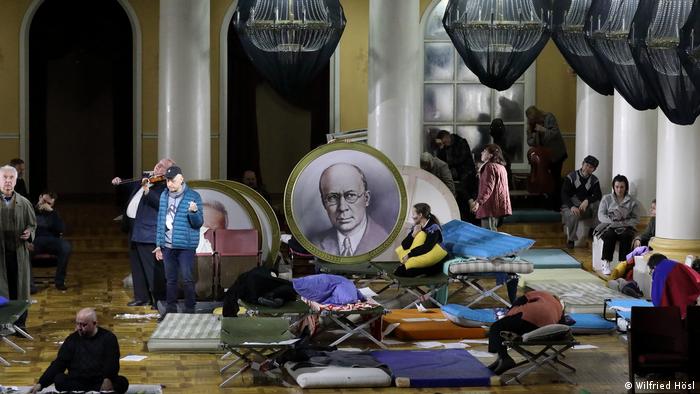
The author is present: Sergei Prokofiev (black and white photo in the middle) is one of the pillar saints of Russian culture
A top international ensemble is involved in Munich, led by conductor Vladimir Jurowski, the acting general music director of the Bavarian State Opera, and star director Dmitri Tscherniakov. Both are defining figures of Russian culture over the past two decades, and both currently operate at a healthy distance from the Kremlin walls.
The outbreak of war on February 24, 2022 drove the makers to the brink of despair and the project to the brink of failure. Nevertheless, the entire team decided to take the risk “War and Peace” – precisely because of the feeling of responsibility and as a commitment to art as a relevant form of social statement – also and especially in times of war.
“Voina i mir” – what war is doing to the world
One cannot ignore the genesis of the work: The four-volume novel by Leo Tolstoy is a key work not only of Russian but of world literature. The title can also be translated as “war and the world” (“voina” clearly means war, but the Russian word “мир” (phonetically “me”) has the double meaning “peace” and “world”) – and old According to sources, that was apparently Tolstoy's original intention. If he had to choose one meaning today, he would certainly have chosen the second.
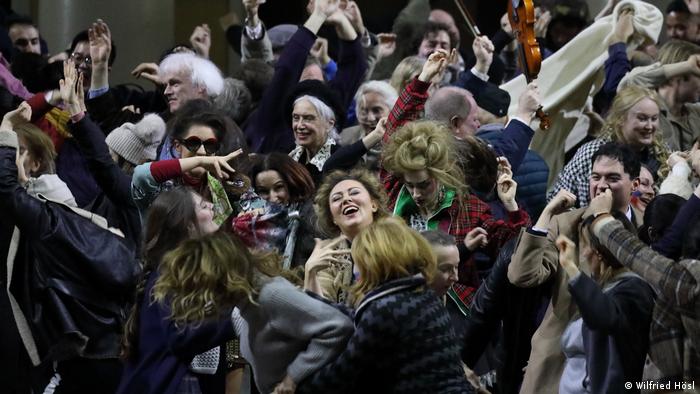
Man and the war: the staging goes on a search
In his work of the century, the writer analyzes the nature of violence – back then in the form of the French army that invaded Russia in 1812. Violence destroys the peaceful world, makes people suffer. The world cannot be changed with violence, according to Tolstoy's highly topical statement.
Sergei Prokofiev, in turn, wrote his opera under the impression of Hitler's invasion of the Soviet Union in 1941. Although the composer inevitably condensed Tolstoy's mammoth work into a kind of “Readers Digest” in his libretto (on which he worked with his second wife Mira Mendelssohn), his is also central idea of a peaceful world, which he contrasted with the clumsy, one-dimensional reality of war.
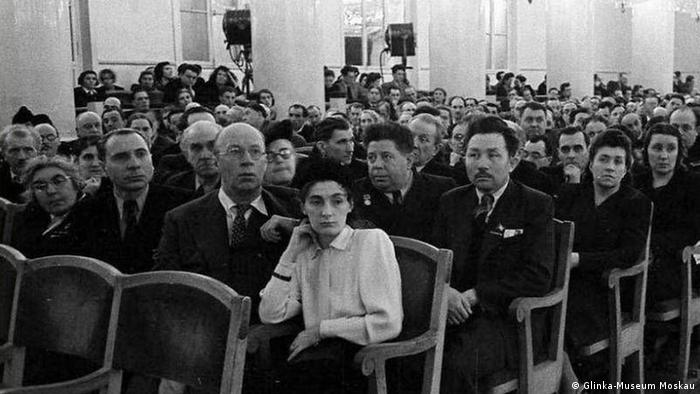
Stiffened: Sergei Prokofiev and his wife and Mira Mendelssohn at the Congress of Soviet Composers in 1948 – where his works were effectively blacklisted
The composer also had other experiences of violence: When he returned to the Soviet Union in the 1930s, despite a successful career in the West, in order to be “number one” among the country's composers, Prokofiev was completely at the mercy of the Stalin regime . The scathing of all modernist currents in music effectively meant that his works were banned from being performed. He worked on “War and Peace” all his life and was never able to see the final version of his work on stage.
The Musical International
For the production in Munich, Jurowski and Tscherniakov recruited a whole host of elite singers from Ukraine, Russia, Latvia, Lithuania, Uzbekistan, Belarus, Armenia and the western hemisphere; the title roles of the lovers, Prince Andrei Bolkonski and Natasha Rostovas, the favorite female character in Russian literature, are brilliantly cast by Andrei Zhilihovsky, who comes from Moldova, and the Ukrainian Olga Kulchynska.
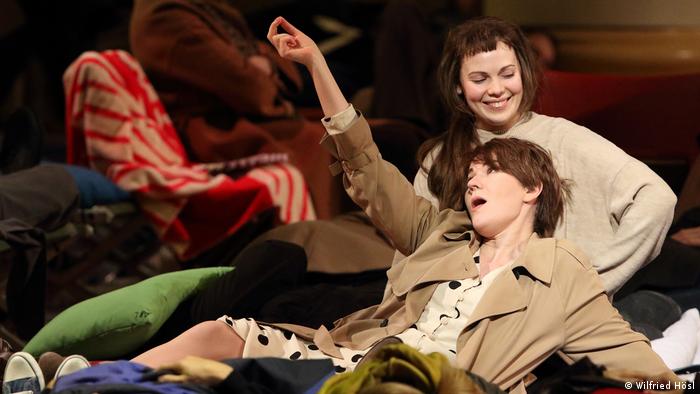
Olga Kultschynska (front) as Natasha Rostova and Alexandra Yangel as Sonya in a scene from the opera
The latter was due to her participation in a supposedly “Russian” production, as seen from circles close to the opera, was exposed to hostilities from some of her radical-minded compatriots, but nevertheless decided on the project.
As if the war were coming to Moscow
Dmitri Tscherniakov takes a radical approach: He brings the war to where it is still thought to be far away – to the heart of Moscow.
The entire plot, both the peaceful episodes of the first part of the opera and the brutal battle and murder scenes of the second part, takes place in the Column Hall, an iconic location in the center of Moscow known to every Russian. Whether the reception for the coronation of the tsars or later the laying out of deceased heads of state from Lenin to Stalin to Gorbachev: the columned hall stands for Russian history. This is where Tscherniakov's heroes are stranded – as modern-day war refugees, isolated from the outside world.
The war reveals itself as a kind of cruel role-playing game without rules, which draws the heroes into a maelstrom of senseless brutality.
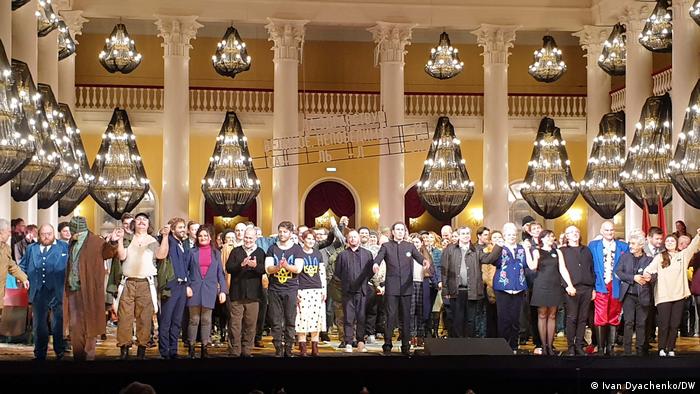
The ensemble was enthusiastically celebrated after the performance
Jurowski, to whom the staging of “War and Peace” as “a central work of the opera repertoire of the 20th century” has long been dear to the heart, the oversized ensemble holds together precisely and powerfully. He also wrote the current version of the work. In Munich, for example, the patriotic mass scenes that Prokofiev had once included in order to placate the censorship were omitted.
“Why do people kill other people?” This central question from Tolstoy's novel is constantly in the air . There is no answer. But what remains is a hatred of war that increases from bar to bar.